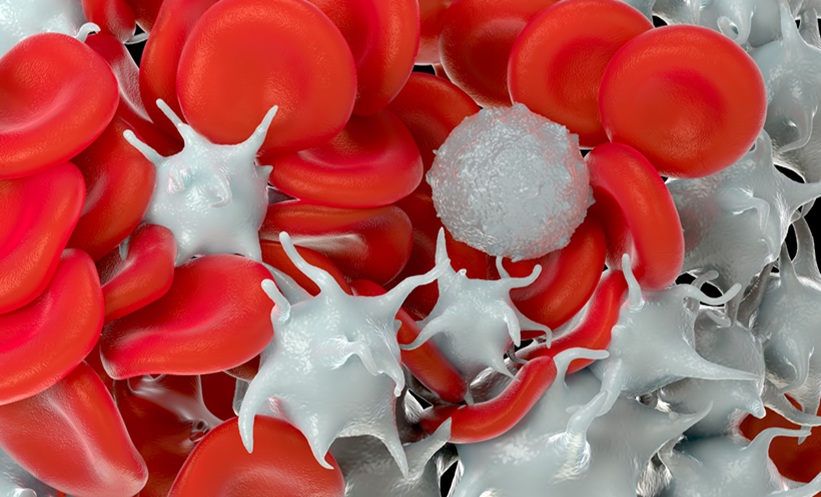Prof Dina Tiniakos | Kapodistrian University of Athens, Greece
We met with EMJ Hepatology Editorial Board member, Prof Dina Tiniakos, at the ILC, to discuss her career path and her experience at the congress itself. From the latest research in nonalcoholic liver disease to the battle against gender discrimination in the workplace, this interview contains insights into many key areas for burgeoning hepatologists.
After finishing your medical degree, you continued with research by doing two PhDs. What made you choose this path?
I did a PhD at the University of Athens in 1993, before doing a PhD at Newcastle University in 1998. I had always wanted to do research and decided that choosing pathology as speciality would give me this opportunity. Pathology lies between basic science and clinical medicine, and therefore gives the possibility to do research on both sides of the spectrum.
One of your research foci is fatty liver. What about this topic really interests you, and what excites you about this topic looking to the future?
Nonalcoholic fatty liver disease (NAFLD), is the most common chronic liver disease today. Until recently, viral hepatitis was the main focus in hepatology, but now almost 25% of the population (or even as high as 30% in some countries, like the USA) are experiencing the negative effects of fatty liver due to obesity and/or diabetes.
The presence of fat in the liver, simple steatosis, can be diagnosed non-invasively by imaging. However, currently, liver biopsy is required to diagnose nonalcoholic steatohepatitis, the progressive form of NAFLD. Clinical research in NAFLD is focussing on the development of biomarkers to non-invasively diagnose steatohepatitis and fibrosis. Hepatopathologists are working closely with their clinical colleagues in this field for both nonalcoholic and alcohol-related fatty liver disease.
You are chairing a parallel session on NAFLD staging and prognosis on Sunday. Are there any speakers that you are particularly excited to hear from, and what do you think will be gained from their talks? Do you think there will be
any challenging topics brought up in discussion?
Most of these oral presentations will focus on non-invasive techniques for staging fibrosis in NAFLD. Liver biopsy is currently the gold standard for evaluating the accuracy of these methods. Combinations of serum markers with clinical data (algorithms) and transient elastography are common non-invasive techniques for assessing liver fibrosis. Non-invasive methods are sensitive and specific for excluding advanced fibrosis and cirrhosis, but they cannot assess intermediate stages of fibrosis, resulting in grey areas in about 15% of the cases. Simple algorithms could be useful in primary practice to identify patients who should be further evaluated by a hepatologist.
You have published many academic papers on a variety of topics. Is there a particular paper or research project that is particularly memorable and that you are most proud of?
This is a difficult question. It is hard to choose because so much work is devoted to each project. During one of the European Union (EU)-funded research projects that were led by Newcastle University, EPoS (Elucidating Pathways of Steatohepatitis), genetic factors associated with NAFLD development were identified. Through my involvement doing the central histological review of the NAFLD biopsies and ensuring homogenous scoring of morphological features, we have been able to show that the TM6SF2 rs58542926 gene polymorphism influences hepatic fibrosis progression and can identify NAFLD patients who may be more prone to developing advanced fibrosis independent of confounding factors, such as age, BMI, diabetes mellitus, and PNPLA3 genotype. The research work performed at Newcastle University in fatty liver disease and hepatic fibrosis is world-class and my involvement is something that I am very proud of.
As a pathologist, how directly do you interact with clinicians and other roles in your typical work?
In clinical practice, the pathologist diagnoses the disease and offers predictive and prognostic information affecting treatment decisions. In hepatology, expert liver pathologists provide or confirm diagnosis and its aetiology, highlight possible concurrent liver disease, and score disease activity and fibrosis, among other inputs. Pathologists play important roles in oncology as members of multidisciplinary teams managing patients with cancer by supplying information about tumour histological type/subtype, differentiation, extent of invasion, lymph node involvement, response to treatment, and patient outcome.
What is your view regarding digital pathology?
This is a very exciting area in pathology, because digitised histopathological slides can be stored on the cloud, where they can be accessed and evaluated from anywhere using a PC, laptop, or even a smartphone, as if using a light
microscope. Artificial intelligence (AI) is also entering the field. This technology allows, among other contributions, objective and accurate quantification of liver fibrosis and detailed evaluation of the extent of steatosis, thus giving to the hepatopathologist more time for the intellectual work: the assessment of the pattern of liver injury and interpretation of tissue findings in the clinical context leading to the correct diagnosis. Pathologists may be thinking that AI could replace them in the future, but it is envisaged that this technology will have an auxiliary role and we are happy to facilitate its development and validate its results. AI is also entering the field of gastroenterology, where machines can be taught, for example, to look for and identify polyps during endoscopic procedures.
Is there a specific session here at the ILC that you have enjoyed the most, or perhaps a certain technique or advancement that you were most intrigued by?
Actually, the oral free paper session I have just attended was very interesting. Possible mechanisms underlying the decline of cognitive function in primary biliary cholangitis (PBC), described as “brain fog” by the affected patients, were demonstrated in mice and the symptoms were shown to be reduced by using obeticholic acid, a farnesoid X receptor agonist, that could directly regulate the blood–brain barrier during cholestasis. To date, there is no study to clarify how chronic cholestasis, which is the main biochemical abnormality, may affect the brain function of PBC patients.
You have worked in the UK, the USA, and Greece. Can you talk about how the research environment differs in
these countries?
In the USA and UK, there is more organisation and clerical support compared to Greece, but of course there is also the financial factor: there are a lot more resources in the UK or USA due to the fact that Greece is still struggling with nationwide financial problems. There is much less financial support for the health sector today compared to several years previously. Nevertheless, the level of research in Greece is high and Greek researchers are very competitive when applying for EU funding.
Who has inspired you in the past or continues to inspire you today?
I believe in the value of mentoring throughout the life of a medical doctor, as we look up to and learn from different mentors throughout different stages in our careers. I have had several mentors in my career. Prof Alastair Burt, an expert liver pathologist, was the supervisor of my first research study when I did a student elective in pathology at the University of Glasgow, Glasgow, UK in 1985, and he is now my collaborator in academia. As a visiting fellow at Saint Louis University, St. Louis, Missouri, USA in 1995, I met Prof Elizabeth Brunt, another expert liver pathologist, who has influenced the way I diagnose liver biopsies, and we have co-authored several research and review articles, as well chapters in liver pathology. In Greece, Prof Ioanna Delladetsima provided a role-model for me, not only in liver diagnostics but also as an academic. Finally, my father, George Tiniakos, was also a liver pathologist, and so he was my first mentor. I am the ‘apple under the apple tree’ in this regard. Not only did I become a medical doctor, but also a pathologist; and not only did I become a pathologist, but also a liver pathologist! This had many positive aspects but was also intriguing and challenging sometimes.
Finally, what would be your advice to young hepatologists attending the ILC for the first time?
Firstly, due to the high number of parallel
scientific sessions, they need to be very well-organised and plan in advance in order to make the most of their time during the congress. Attending basic science sessions will help them understand in-depth the pathophysiology of liver diseases. The physician of the future will be a physician-scientist who will not only know the clinical aspects of human disease but will also understand the basic science and molecular background. In hepatology, learning takes place in the clinics but, during ILC, focussing on basic science sessions gives additional value to attending the meeting.
Of course, making the most out of the ILC involves a combination of session types. There are very interesting clinical sessions every morning, which I know young trainees are keen to attend. Finally, the postgraduate course held in the first 2 days, is always very well attended and a ‘must’ while at the congress.
It is exciting to see the ILC growing; my first ILC, held in Athens in 1994, was attended by 500 delegates. Now, we were informed that 9,000 hepatologists and 2,500 clinical scientists have registered this year. The growth in attendance has been exponential in the last 25 years.








